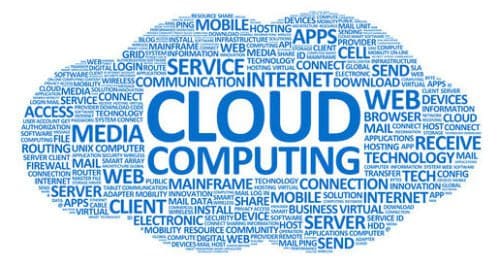Cloud Computing Key Terms, Explained
A concise overview of 20 core cloud computing ecosystem concepts. The focus here is on the terminology, not The Big Picture.
8. AWS
AWS simply stands for Amazon Web Services. American giant Amazon was perhaps one of the earliest companies to jump into the cloud computing bandwagon. Presently, Amazon Web Services is a cloud service provider with a presence across the Americas, Australia, Europe and Asia.
9. Amazon EC2 (Elastic Cloud Compute)
Being a part of AWS, EC2 is what is known to offer scalable cloud computing options to developers across the world. It is used for the deployment of cloud-based applications on virtual servers that can be rented. Users of EC2 can even opt to pay for the resources they use by the hour. An auto-scaling feature allows developers to dynamically adapt to changes in requirements.
10. Amazon Simple Storage Service (S3)
This is again a part of AWS that allows for the storage and backup of data on the cloud. It offers highly scalable, unlimited archiving and backup option for the users of AWS.
11. Cloud Sourcing
This is a term that means replacing the traditional IT operations of an organization, with cloud services being outsourced to a cloud provider. The biggest benefit of this is low costs and easy management of computing resources.
12. Consumer Cloud
These are cloud offerings mainly intended to be used by people for their personal use. A fine example of this is Drop box, as it offers cloud storage facilities to users.
13. Multi-tenancy
The ability of a single platform to run and hold more than just a process, application or virtual machine, for many users can be labeled as multi-tenancy. Cloud computing environments are usually available to multiple users and hence, are mostly multi-tenant.
14. Vertical Cloud
This is a cloud environment that is built to serve the needs across several specific industries. Some of the most common areas include healthcare, government tasks, financial services, and more.
15. Cloud Portability
This term refers to the ability of an application and data to move from one cloud service provider to another cloud service provider.
16. Cloud Backup
Cloud backup means to store the data to a remote cloud based server. This is nothing but a cloud storage which stores the data.
17. Cloud Enablement
It means to make a cloud computing environment by enabling software, infrastructure, applications, clients etc.
18. Cloud Migration
Cloud migration is nothing but migrating on premises application, data, software, databases etc into a cloud environment. This may be a partly or full transition.
19. Cloudstorming
This term means to assemble multiple cloud computing environments. In a business scenario, there may be a need to provision multiple cloud computing systems, so it can be referred as cloudstorming approach.
20. Cloud Broker
It refers to an entity which is responsible for managing relationships with various cloud service providers. It acts as a middle man between service providers and service consumers.
As cloud computing dominates the computing technology domain, there are certainly several terms that we must be familiar with. The above list primarily aims to enlighten you with some of the important terms that one may have come across. As cloud computing is evolving, new technology and terms are also introduced frequently. So we have put our effort to capture the most frequently used key terms and provide some explanation. Hope it will help you understand the basics.
Related:


